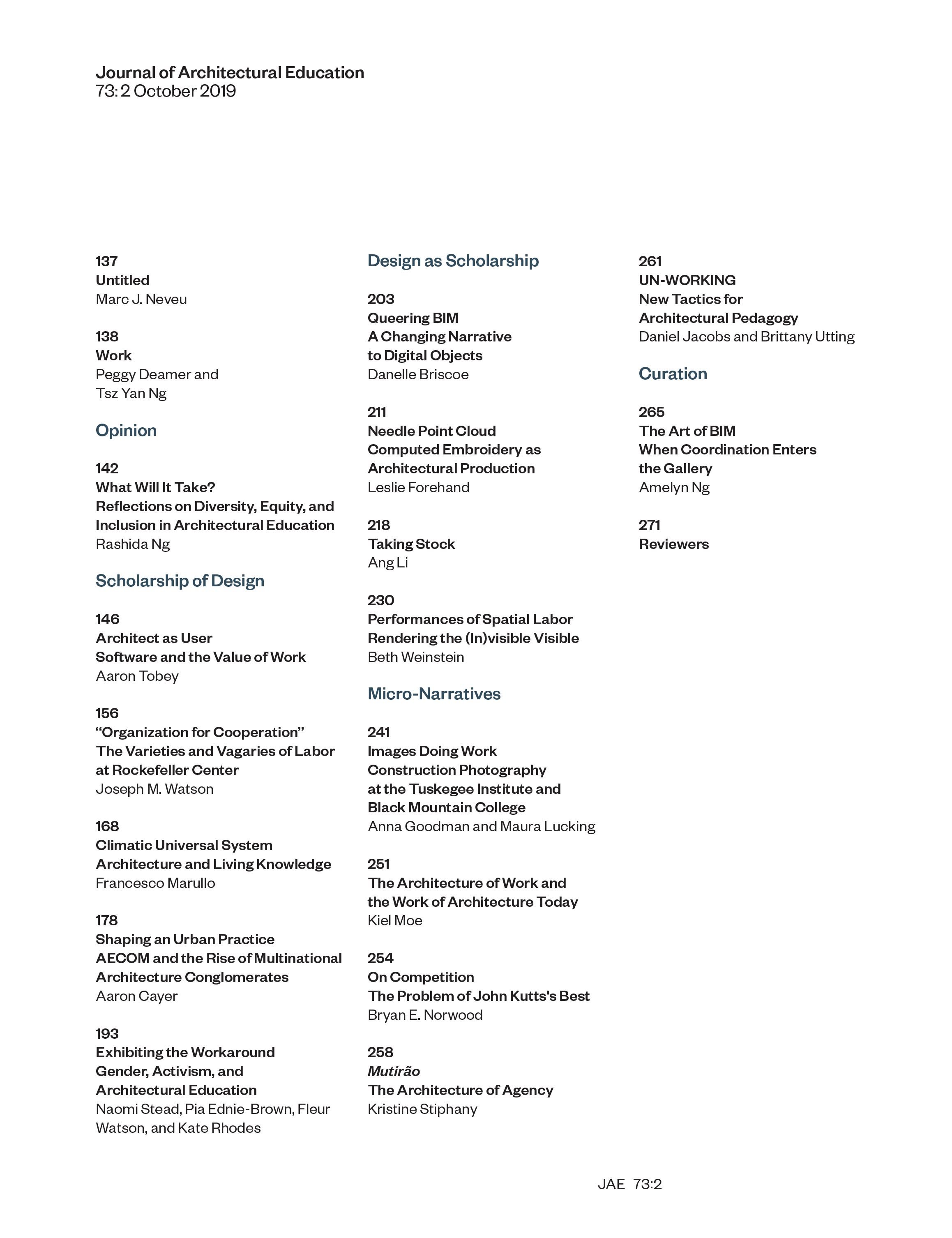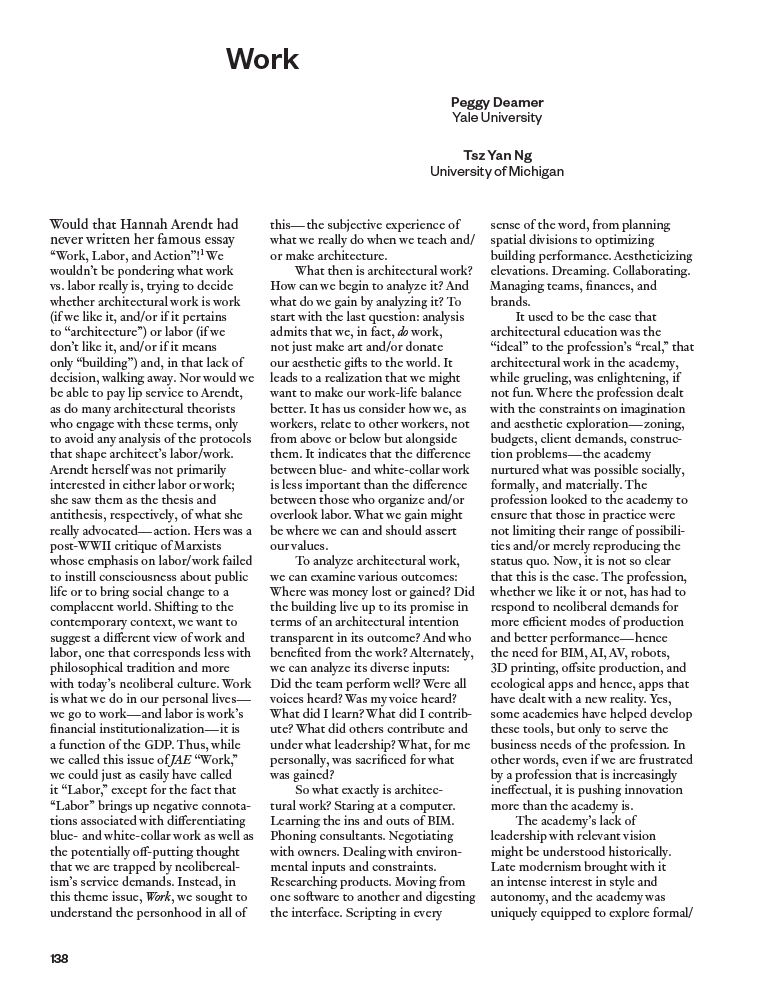





Peggy Deamer, Yale University
Tsz Yan Ng, University of Michigan
Architects have always been concerned with the effects of what their design produces: What do our buildings/environments look like? How are they experienced? How do they perform? Concerns for how architecture is produced, however, have been largely sidestepped until more recently when digital fabrication and various types of information delivery systems recast the nature of how we work and the types of skills necessary to perform various tasks related to the production of buildings.
Our social and ethical responsibility as designers in relation to labor does, however, have a legacy. Nineteenth and early twentieth century theorists’ attention to workers, be they builders (think John Ruskin) or designers (think Adolf Loos and Walter Gropius) addressed issues of labor in a period of industrial and economic transformation. Today, in a radically changed global context, can we similarly rethink work? With our work increasingly undervalued and often unrewarding, is it possible to reevaluate the nature of what we do, how we perform tasks, with whom we collaborate, and under what ethical directives? Within broader shifts in what constitutes labor for design professionals, how can architects lead, nudge, and recalibrate the labor of those in related fields and for ourselves? And furthermore, how can architectural education acknowledge, assist, and even innovate in this recalibration?
Without making an Arendtian distinction between work and labor, we make the assumption that work and labor are two sides of the same coin. Work is what an architect does in their daily life; labor is their role in the larger economic equation. But even here, historical and theoretical positions of this sort – as they pertain to architecture – need to be debated. Where should our labor be focused – in service, in making, or in the production of information? Are there constructive moments of intersections between these activities? If we still believe that architectural production operates in the midst of historical conditions of labor, management, and resources, is it now possible to survey where, in this digital and neoliberal era, architectural work is or is not singular, in the past and in the present, in order to theorize a more meaningful future? How might studio, history/theory, professional practice, and fabrication/structures courses all become arenas for this speculation?
The Journal of Architectural Education Issue 73:2 seeks Scholarship of Design, Design as Scholarship, and Micro-Narratives that address educating architects for better empowerment and more adept participation in our contemporary society. Given the myriad types of work architects produce – from imaging representations that engender new worlds, to integrating advance technology for building, to theorizing “design” and “professionalism” – what is the academy’s role in preparing students to be smart, agile, and responsible professionals? What training should be reinforced to redirect hegemonic values to address inclusivity and diversity? How should we envision the labor of architects in the next 10, 20, 50 years? How can the academy model the ethos and aspirations we hope to produce as a society and be a model for collaborative work?